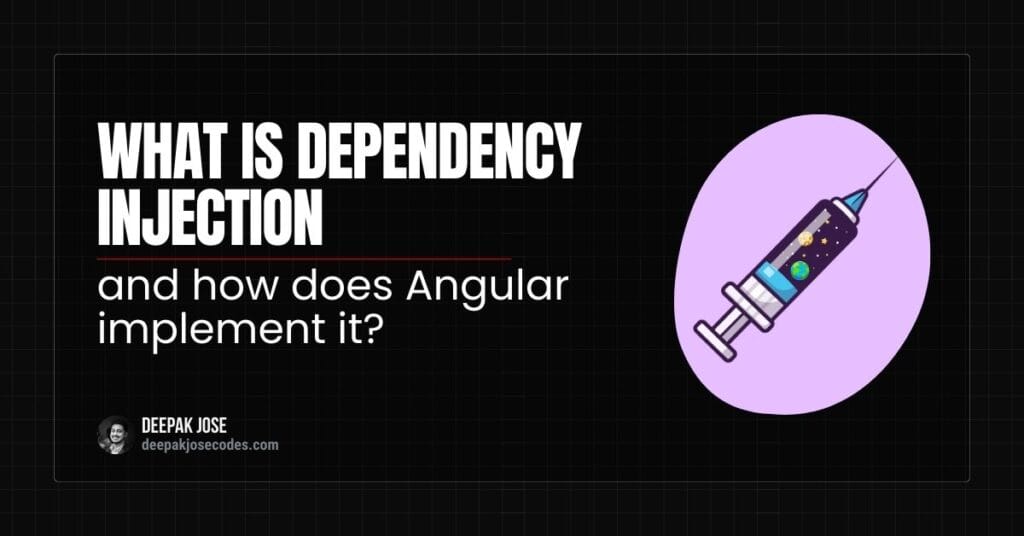RxJS operators allow you to manage, transform, and handle streams of asynchronous data in web development frameworks like Angular effectively. Below is a detailed breakdown of key RxJS operators, particularly focusing on different types of mapping operators like map(), switchMap(), mergeMap(), concatMap(), exhaustMap().
1. Map Operator
The map() operator transforms each emitted value from the source observable into a new value based on the provided function.
Example:
import { of } from 'rxjs';
import { map } from 'rxjs/operators';
of(1, 2, 3)
.pipe(map(x => x * 2))
.subscribe(value => console.log(value));
Output:
2
4
6
2. SwitchMap Operator
The switchMap() operator maps each emitted value to a new observable, unsubscribing from the previous observable and subscribing to the new one. It’s ideal for search input scenarios.
Example:
import { interval, fromEvent } from 'rxjs';
import { switchMap, map, take } from 'rxjs/operators';
const clicks = fromEvent(document, 'click');
click$
.pipe(
switchMap(() => interval(1000).pipe(map(i => `Interval count: ${i}`)))
)
.subscribe(console.log);
Output Explanation:
- Each click restarts the interval emission. Previous emissions are canceled.
0
1
2
// click again
0
1
3. MergeMap Operator
The mergeMap() (also known as flatMap) maps each emitted value into a new observable and merges all resulting observables, emitting values concurrently.
Example:
import { of, interval } from 'rxjs';
import { mergeMap, take } from 'rxjs/operators';
of('A', 'B')
.pipe(
mergeMap(letter => interval(1000).pipe(
take(3),
map(i => letter + i)
))
)
.subscribe(console.log);
Output Explanation:
- Values from observables are emitted concurrently.
A0
B0
A1
B1
A2
B2
4. ConcatMap Operator
concatMap() maps values sequentially. It waits for each inner observable to complete before starting the next.
Example:
import { of, interval } from 'rxjs';
import { concatMap, take, map } from 'rxjs/operators';
of('X', 'Y')
.pipe(
concatMap(letter => interval(1000).pipe(
take(2),
map(i => letter + i)
))
)
.subscribe(console.log);
Output Explanation:
- Waits for each interval to complete before starting the next one.
X0
X1
Y0
Y1
4. ExhaustMap Operator
The exhaustMap() operator ignores subsequent emissions until the current observable completes.
Example:
import { fromEvent, interval } from 'rxjs';
import { exhaustMap, take } from 'rxjs/operators';
const clicks$ = fromEvent(document, 'click');
clicks$
.pipe(
exhaustMap(() => interval(1000).pipe(take(3)))
)
.subscribe(console.log);
Output Explanation:
- Starts interval on first click and ignores other clicks until current interval completes.
0
1
2
// Further clicks during this interval emission are ignored.
// After completion, the next click restarts emission again.
Summary of Mapping Operators
| Operator | Behavior | Common Use Case |
|---|---|---|
| map | Transforms emitted values directly. | Simple transformations |
| switchMap | Latest emission takes priority, cancels previous. | Search inputs, autocomplete |
| mergeMap | Handles multiple observables concurrently. | Parallel requests |
| concatMap | Sequential handling, waits for observables to complete. | Ordered requests |
| exhaustMap | Ignores new emissions until current completes. | Form submissions |
Best Practices:
map()is for simple data transformation.switchMap()is best for situations where only the latest result matters.mergeMap()is good for handling concurrent operations.concatMapensures ordered and sequential processing.exhaustMaphelps prevent multiple simultaneous actions, like repeated form submissions.
This detailed breakdown of RxJS operators with explanatory examples and expected outputs should significantly improve your understanding and efficient usage in Angular applications.



